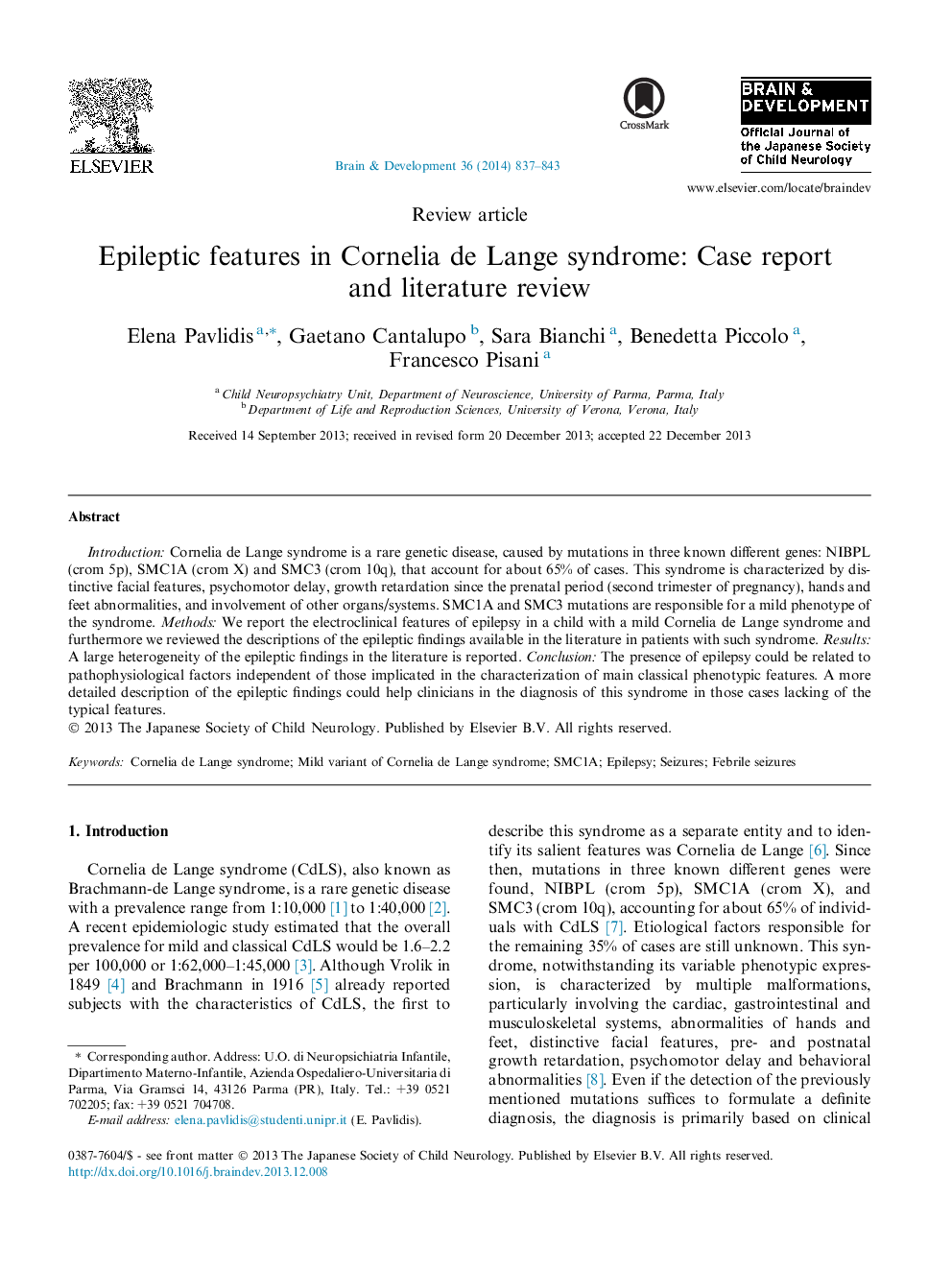| Article ID | Journal | Published Year | Pages | File Type |
|---|---|---|---|---|
| 3036861 | Brain and Development | 2014 | 7 Pages |
Introduction: Cornelia de Lange syndrome is a rare genetic disease, caused by mutations in three known different genes: NIBPL (crom 5p), SMC1A (crom X) and SMC3 (crom 10q), that account for about 65% of cases. This syndrome is characterized by distinctive facial features, psychomotor delay, growth retardation since the prenatal period (second trimester of pregnancy), hands and feet abnormalities, and involvement of other organs/systems. SMC1A and SMC3 mutations are responsible for a mild phenotype of the syndrome. Methods: We report the electroclinical features of epilepsy in a child with a mild Cornelia de Lange syndrome and furthermore we reviewed the descriptions of the epileptic findings available in the literature in patients with such syndrome. Results: A large heterogeneity of the epileptic findings in the literature is reported. Conclusion: The presence of epilepsy could be related to pathophysiological factors independent of those implicated in the characterization of main classical phenotypic features. A more detailed description of the epileptic findings could help clinicians in the diagnosis of this syndrome in those cases lacking of the typical features.
